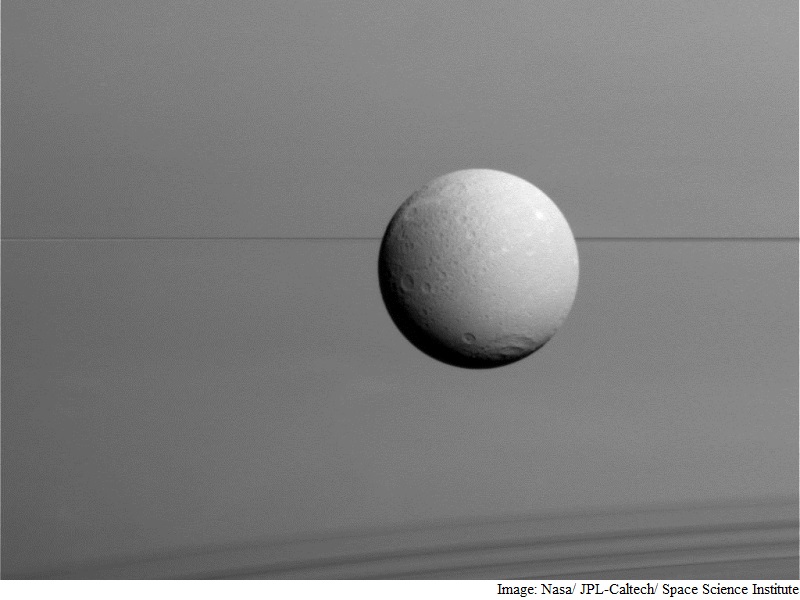- Home
- Science
- Science News
- Nasa's Cassini Probe Captures Stunning New Images of Saturn Moon Dione
Nasa's Cassini Probe Captures Stunning New Images of Saturn Moon Dione

Two of the new images show the surface of Dione at the best resolution ever.
Cassini passed 474 km above Dione's surface on Aug 17. This was the fifth close encounter with Dione during Cassini's long tour at Saturn.
"I am moved, as I know everyone else is, looking at these exquisite images of Dione's surface and crescent, and knowing that they are the last we will see of this far-off world for a very long time to come," said Carolyn Porco, Cassini imaging team lead at the Space Science Institute, Boulder, Colorado.
The main scientific focus of this flyby was gravity science, not imaging.
This made capturing the images tricky as Cassini's camera was not controlling where the spacecraft pointed.
Cassini scientists will study data from the gravity science experiment and magnetosphere and plasma science instruments over the next few months as they look for clues about Dione's interior structure and processes affecting its surface.
The spacecraft is scheduled to make three approaches to the geologically active Saturn's moon Enceladus on October 14 and 28 and December 19.
During the October 28 flyby, the spacecraft will come dizzyingly close to Enceladus, passing a mere 49 kms from the surface.
Cassini will make its deepest-ever dive through the moon's plume of icy spray at this time, collecting valuable data about what's going on beneath the surface.
During the mission's final year, Cassini will repeatedly dive through the space between Saturn and its rings.
Catch the latest from the Consumer Electronics Show on Gadgets 360, at our CES 2026 hub.
Related Stories
- Samsung Galaxy Unpacked 2025
- ChatGPT
- Redmi Note 14 Pro+
- iPhone 16
- Apple Vision Pro
- Oneplus 12
- OnePlus Nord CE 3 Lite 5G
- iPhone 13
- Xiaomi 14 Pro
- Oppo Find N3
- Tecno Spark Go (2023)
- Realme V30
- Best Phones Under 25000
- Samsung Galaxy S24 Series
- Cryptocurrency
- iQoo 12
- Samsung Galaxy S24 Ultra
- Giottus
- Samsung Galaxy Z Flip 5
- Apple 'Scary Fast'
- Housefull 5
- GoPro Hero 12 Black Review
- Invincible Season 2
- JioGlass
- HD Ready TV
- Laptop Under 50000
- Smartwatch Under 10000
- Latest Mobile Phones
- Compare Phones
- Honor Win RT
- Honor Win
- Xiaomi 17 Ultra Leica Edition
- Xiaomi 17 Ultra
- Huawei Nova 15
- Huawei Nova 15 Pro
- Huawei Nova 15 Ultra
- OnePlus 15R
- Asus ProArt P16
- MacBook Pro 14-inch (M5, 2025)
- OPPO Pad Air 5
- Huawei MatePad 11.5 (2026)
- Xiaomi Watch 5
- Huawei Watch 10th Anniversary Edition
- Acerpure Nitro Z Series 100-inch QLED TV
- Samsung 43 Inch LED Ultra HD (4K) Smart TV (UA43UE81AFULXL)
- Asus ROG Ally
- Nintendo Switch Lite
- Haier 1.6 Ton 5 Star Inverter Split AC (HSU19G-MZAID5BN-INV)
- Haier 1.6 Ton 5 Star Inverter Split AC (HSU19G-MZAIM5BN-INV)

















